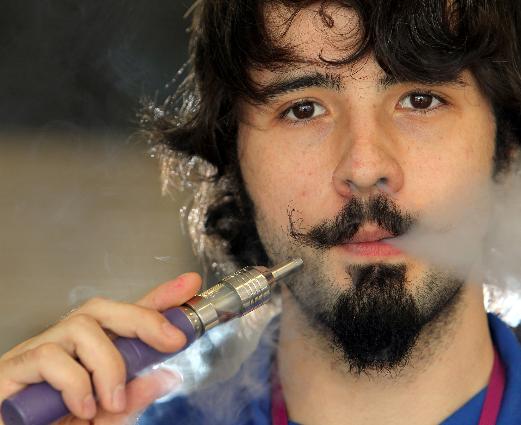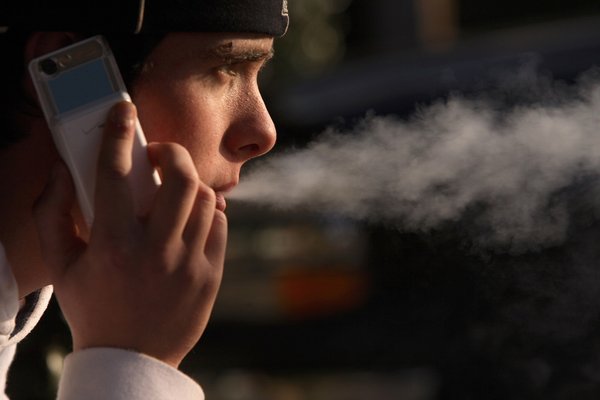North Dakota ranks poorly in smokeless tobacco use
By Robin Huebner Forum News Service
FARGO — Chris Carlson’s nicotine habit started with chewing tobacco and his college fraternity brothers.
He really got hooked in the mid ’80s as an exchange student in Sweden, where he says everyone – including his female classmates – chewed the smokeless tobacco known as “snus.”
“I’ve got warm, sweet memories of the time,” said Carlson, 51, Fargo, who teaches college public speaking courses and is an adjunct instructor of Norwegian and Scandinavian studies at Concordia College.
While Carlson fondly recalls the rituals and relaxed feelings he said went along with using smokeless tobacco, his memory of that 24-year period is selective.
“You don’t remember all the times it made you nauseous,” he said.
Carlson also smoked cigarettes, but at the urging of his children, gave up both vices about eight years ago with the help of nicotine gum.
He fully understands the difficulty in quitting a substance that is highly addicting and deeply rooted in culture.
At a time when anti-smoking laws have carved out a strong foothold in North Dakota, the state is at the other end of the spectrum with smokeless tobacco.
Statistics from the U.S. Centers for Disease Control and Prevention show that North Dakota is in the middle of the pack for cigarette smoking, but is third worst – behind Wyoming and Mississippi – in the percentage of adults who use chewing tobacco or snuff.
The ranking lists all 50 states and the District of Columbia.
North Dakota was ranked 49th with 7.6 percent of its adults using smokeless tobacco in 2011 – the most recent year for which numbers are available.
South Dakota ranked 43rd with 6.8 percent, and Minnesota was 32nd with 4.8 percent of adults using smokeless tobacco.
The highest percentage of smokeless tobacco users in North Dakota by race are American Indians, who double up on the number of Caucasians using it.
A tribal tradition
Neil Charvat is a former smoker and smokeless tobacco user whose career now focuses on preventing people from picking up the habit.
Charvat, 44, works closely with the state’s Indian reservations as director of the tobacco prevention and control program for the North Dakota Department of Health in Bismarck.
While the state’s smoke-free laws don’t apply to reservations because of their sovereign nation status, the state does fund tribal tobacco prevention programs.
Charvat said it can be tricky educating American Indians about tobacco because the traditional form of it is often central to their religious beliefs.
“If we say, ‘Tobacco is bad,’ that’s a direct insult to their religion,” he said.
So when tribal educators go into schools on the reservation, they make an important distinction from the very start.
“We teach from the viewpoint of it being commercial vs. traditional tobacco,” said Jackie Giron, tobacco prevention coordinator for the Turtle Mountain Band of Chippewa.
Charvat said traditional tobacco grown by tribes doesn’t contain the additives and chemicals that commercial tobacco contains.
In addition, it’s meant for ceremonial use only – not recreation.
In some cases, addictions took hold after tribes began using commercial tobacco for those ceremonies when they weren’t able to obtain traditional tobacco, Charvat said.
As years went on, some commercial tobacco companies even sponsored powwows.
“They portrayed it as something sacred and not harmful to you, which it is,” Giron said.
She said she sees both adults and children chewing tobacco at Turtle Mountain. It means the education process needs to start early, in kids as young as 3 and 4 – and continue through high school and college, she said.
“All you can do is take baby steps sometimes,” Giron said.
Just as dangerous
One challenge in keeping people from starting with smokeless tobacco and helping them quit involves a common, but mistaken belief.
“Some of that has to do with the misconception that if you don’t inhale, it might be somewhat safer,” said Holly Scott, a tobacco prevention coordinator at Fargo Cass Public Health.
In fact, it’s equally as risky.
“When chewing, they’re actually getting more nicotine than in cigarettes, increasing their nicotine addiction,” said Melissa Markegard, who is also a tobacco prevention coordinator at Fargo Cass Public Health.
The incidence of many types of cancer and other diseases can be attributed to smoking and/or chewing tobacco, but combining the products makes it even worse.
“It greatly increases (the risk of lung cancer) if they use both together,” Markegard said.
While there are fewer opportunities than ever to smoke in North Dakota, the same restrictions don’t apply to chewing tobacco because it’s easier to hide.
Charvat said as a teen, he used to smoke a cigarette outside of his school, and then tuck a chew into his mouth before going to class.
Youth at risk
A survey of more than 10,500 North Dakota high school students in 2013 found 13.8 percent of them had used chewing tobacco, snuff or dip during the past 30 days.
It also found chewing tobacco is more often used in smaller towns than in urban centers – 15.1 percent to 11.2 percent, respectively.
“In Western and rural cultures, it’s more commonplace and accepted,” Charvat said.
According to the survey, the Williston area had the highest incidence of chewing tobacco use in high school students, while the Grand Forks area had the lowest.
The Youth Risk Behavior Survey, a collaboration of federal, state and local health education agencies, will be conducted again this spring.
Scott said her overall goal is to “de-normalize” all tobacco use because it’s the state’s No. 1 cause of preventable disease and death.
Charvat is optimistic North Dakota will show up better the next time rankings are compiled because the people he’s working with are motivated.
“They all know someone who’s died from tobacco- related cancer,” he said.
http://bismarcktribune.com/news/state-and-regional/north-dakota-ranks-poorly-in-smokeless-tobacco-use/article_86fa27cb-e925-5210-9ee7-2456e943dbde.html



